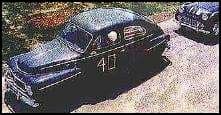
Curated with aloha by
Ted Mooney, P.E. RET

The authoritative public forum
for Metal Finishing 1989-2025

-----
Selection of coating resistance value for coal tar enamel on pipe lines
I want to know the coating resistance value for coat tar enamel and fusion bonded epoxy, which are in use on gas pipe lines.
[name deleted by editor at request]esearcher - Cardiff, UK
2006
2006
Hi Niamat,
I may be wrong but I don't know of any 'value' for coal tar enamel
(you said 'coat' but that seems to be a misspelling) and the word
'fusion' for epoxy sounds perhaps wrong ... fusion applies to thermoplastics not thermosets.
For the epoxies, try SHELL for data.
So they are coating gas lines. Interesting. I was told that one the last 2 earthquakes in Japan and in California, where line breakage occurred, it was with concrete, PVC and similarly made piping ... but the Polyethylene pipe DIDN'T BREAK.

Freeman Newton [deceased]
(It is our sad duty to advise that Freeman passed away
April 21, 2012. R.I.P. old friend).
Q, A, or Comment on THIS thread -or- Start a NEW Thread